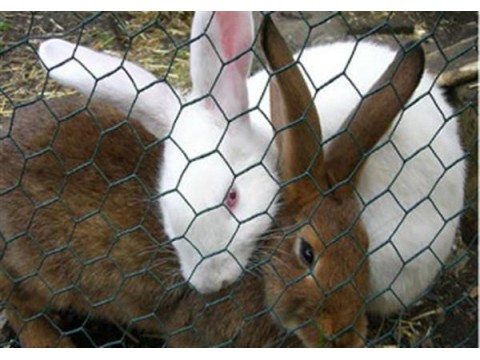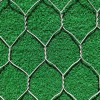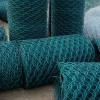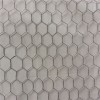Poultry netting, also known as chicken wire, is manufactured with low carbon galvanized iron wire using a twisting weave method. It is typically finished with galvanization or PVC coating for improved durability. The mesh has a hexagonal shape and is available in standard and reverse twisted styles. Horizontal reinforcement wires ensure stability and keep the mesh upright.Poultry netting remains a versatile solution for farmers, pet owners, and gardeners, providing sturdy fencing that can withstand environmental wear while being flexible enough for various installations.
Material: Galvanized low carbon iron wire or PVC-coated wire for added rust resistance.
Mesh Shape: Uniform hexagonal openings for better strength and containment.
Surface Treatment: Galvanized or PVC-coated to withstand environmental elements.
Common Sizes:
- Mesh Size: The mesh openings generally range from 1/2 inch to 2 inches (12.7 mm to 50.8 mm), with typical sizes of 1/2 inch (12.7 mm), 1 inch (25.4 mm), and 1.5 inch (38.1 mm).
- Wire Gauge: Available in wire gauges ranging from 19 gauge (1 mm) to 22 gauge (0.7 mm) to suit various applications.
- Roll Width: Usually available in widths of 0.9 m to 1.8 m to allow for different fence heights.
- Roll Length: Ranging from 10 m to 50 m per roll, providing flexibility for different project sizes.
Customization Capabilities:
- Mesh Size Customization: Can be tailored to specific needs, with smaller mesh for smaller animals and larger mesh for larger livestock.
- Wire Gauge Selection: Thicker gauges can be used where greater strength is required, while thinner gauges are suitable for lightweight fencing.
- Surface Treatment Options: Choose between galvanization and PVC coating for varying levels of rust and corrosion resistance.
- Roll Dimensions: Customizable roll widths and lengths ensure optimal coverage with minimal cutting and waste.














